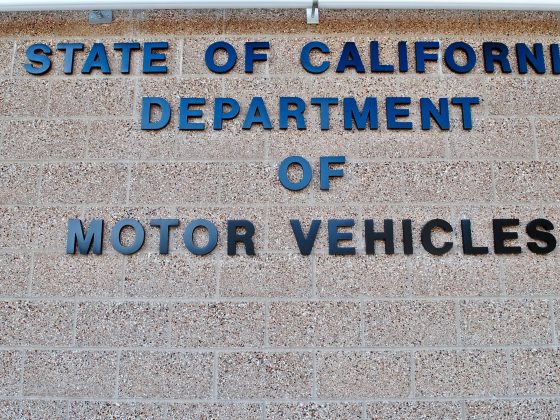With the coronavirus in full swing, and even surging as wintertime is approaching, the topic of electric vehicles is grabbing plenty of attention. From startups getting in on the EV car production, to battery innovations, to future bans for new gas-powered vehicle sales policies, and increased charging stations nationwide, electric vehicles are definitely here to stay.
SEE ALSO: ELECTRIC VEHICLES: RECHARGING, BATTERY, DRIVING RANGE & MORE.
Use eTags© to Quickly Complete Your DMV Service. Renewals, Title Transfers and More, All Online!
There’s plenty to know before buying an EV for the very first time. It’s important you understand the full range capacity, how and where to charge the vehicle, insurance cost and the like. Another crucial factor to understand is the federal tax credit attached to electric vehicles. What’s been touted most is that $7,500 tax credit, but do you really know what it means?
The Toyota Prius Prime comes with a $4,502 federal tax credit, while the Toyota RAV4 comes with a $7,500 credit
The Ins and Outs of EV tax credits
eTags, your online, quick and easy way to title and register EVs, is here to help explain the ins and outs of the electric vehicle tax credit, and the fine print that goes along with it. We’re here to help clarify tax credits, and how it applies to specific electric cars. For example, that $7,500 is just one of the credits; the Audi Q5 plug-in hybrid has a federal tax credit of $6,712, while the Kia Niro plug-in hybrid has a $4,453 credit.

Up to $7,500 in tax credits: buying vs. leasing
As mentioned above, various EVs have different federal. Tax credits. It’s up to $7,500, not always $7,500. That number depends on the car manufacturers incentives, but also on your tax bill. Let’s say you decide to purchase a Hyundai Ioniq Electric which comes with that $7,500 in tax credit, but your tax bill is $3,000, that’s all your tax credit will be. You won’t get a refund for the leftover $4,500.
And if you decide to lease an electric vehicle instead of buying one, the federal tax credit goes to the car manufacturer offering you the lease since they’re the actual owner of the vehicle. Typically, leasing customers benefit in an indirect way, where their monthly car payments are lowered since the car manufacturer factored in that credit into the price. Please note though that this is at the discretion of the automaker.

More fine print about EV tax credits
Did you know these federal tax credits are also based on the battery size. EV batteries come in different power-to-weight ratio for vehicles and are rechargeable. They all have specific energy units, energy density, and more. The most common ones are lithium-ion and lithium polymer, but there’s plenty more such as lead-acid, and zebra batteries made from sodium nickel chloride.
To calculate the federal tax credit, the IRS uses a specific formula based on the battery pack. It’s why a Chevrolet Volt with just 53 miles on electric driving range has the same credit as a BMW i3 EV that offers a 153 miles range.
SEE ALSO: HOW TO NEGOTIATE WITH DEALERSHIPS FOR BEST PRICE ON VEHICLE
IRS formula for tax credit, capped at $7,500: $2,500 for a minimum of a 5kWh battery pack +$417 for all battery packs+ $417 per kWh of a battery pack in excess of 5 kWh
To qualify for the tax credit, the electric vehicle you purchase such as a car or SUV has to be for the purpose of you driving the vehicle, not reselling it. The EV must be driven in the U.S., and built by qualified automakers. Plug-in hybrids and battery electric vehicles also must have battery packs that are rated for at least 4 kWh of energy storage and are capable of being recharged from an external source.

Yes, there’s a tax credit on electric motorcycles
The e-motorcycle federal tax credit is also known as the 2-wheeled plug-in credit. Electric motorcycle buyers get a tax credit equivalent to 10% of their qualified bike’s purchase price for a sum of up to $2,500. Again, just like electric cars, money off of what you owe in taxes.
Officially, the Qualified Plug-In Electric Drive Motor Vehicle Credit extension was signed into law in December 2019. To qualify for the credit you have to have placed the e-motorcycle in service during your tax year and be the first owner of the bike in question. You also have to be riding primarily in the U.S. Some insurance carriers such as Farmers Insurance provide discounts of up to 10% on all major coverage for hybrid electric vehicles.
Tax credits phase out
Electric vehicle tax credits are being phased out as sales increase, since the initial high expense of new tech decreases as more drivers choose EVs. Each car manufacturer has their own “expirations date,” since it only comes when they automaker sells 200,000 qualified vehicles.
Tesla hit their 200,000 sale in July 2018. As a result, there are no more federal tax credits or Tesla purchase
General Motors joined Tesla in the last four months of 2018, becoming the second carmaker to sell the 200,000 electric vehicles resulting in no more tax credits too. Nissan seems to be next to be phased out. Toyota, Ford, and BMW are next.
Different tax credits for different vehicle models
As mentioned before, not all federal credits are equal. While the Nissan Leaf and the Jaguar I-Pace have a $7,500 tax credit, the BMW X3 Hybrid has $5,836. The Subaru Crosstrek Hybrid comes with a $4,502 tax credit, while the Ford Fusion Plug-In Hybrid has a $6,843. Most electric vehicles have the $7,500 tax credit, while most plug-in hybrids range between $4,500 and $7,500.
And that’s kind of most of the fine print in buying EVs.









